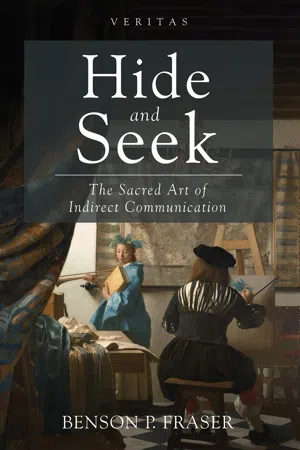
- 308 pages
- English
- ePUB (mobile friendly)
- Available on iOS & Android
About this book
As bearers of the divine image, all of us are storytellers and artists. However, few people today believe in truth that is not empirically knowable or verifiable, the sort of truth often trafficked through direct forms of communication. Drawing on the works of Soren Kierkegaard, Benson P. Fraser challenges this penchant for direct forms of knowledge by introducing the indirect approach, which he argues conveys more than mere knowledge, but the capability to live out what one takes to be true. Dr. Fraser suggests that stories aimed at the heart are powerful instruments for personal and social change because they are not focused directly on the individual listener; rather, they give the individual room or distance to reconsider old meanings or ways of understanding. Indirect communication fosters human transformation by awaking an individual to attend to images or words that carry deep symbolic force and that modify or replace one's present ways of knowing, and ultimately make one capable of embodying what he or she believes. Through an examination of the indirect approach in Kierkegaard, Jesus, C. S. Lewis, and Flannery O'Connor, Fraser makes a strong case for the recovery of indirect strategies for communicating truth in our time.
Frequently asked questions
- Essential is ideal for learners and professionals who enjoy exploring a wide range of subjects. Access the Essential Library with 800,000+ trusted titles and best-sellers across business, personal growth, and the humanities. Includes unlimited reading time and Standard Read Aloud voice.
- Complete: Perfect for advanced learners and researchers needing full, unrestricted access. Unlock 1.4M+ books across hundreds of subjects, including academic and specialized titles. The Complete Plan also includes advanced features like Premium Read Aloud and Research Assistant.
Please note we cannot support devices running on iOS 13 and Android 7 or earlier. Learn more about using the app.
Information
Section Three
Jesus: Parable and Provocation
Table of contents
- Title Page
- Section One
- Section Two
- Section Three
- Bibliography